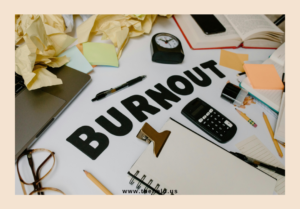
Workplace stress and burnout have become familiar companions for many employees. Whether you’re working remotely or in an office, the demands of modern work can take a toll on your mental and physical health. But what exactly is employee burnout, and how can we identify and address it to create a healthier, more sustainable work environment?
Understanding Employee Burnout
Employee burnout isn’t just feeling tired or stressed at work—it’s an all-encompassing feeling of mental, emotional, and physical exhaustion due to prolonged stress. It can manifest as feelings of cynicism, reduced efficiency, and a lack of motivation, ultimately impacting one’s productivity and overall well-being.
Signs and Symptoms
Recognizing the signs of burnout is crucial. Keep an eye out for persistent fatigue, increased cynicism or negativity, decreased performance, and detachment from work responsibilities. Physical symptoms like headaches, muscle tension, and sleep disturbances can also signal burnout. Furthermore, emotional changes, such as increased irritability or a lack of satisfaction, might be indicative of burnout.
Prevention and Cure
Preventing burnout involves a proactive approach from both employees and employers:
1. Cultivate a Supportive Work Environment: Employers can foster a workplace culture that encourages open communication, work-life balance, and support for mental health. Regular check-ins and creating an environment where employees feel valued can significantly reduce burnout.
2. Encourage Breaks and Time Off: It’s essential to take breaks during the workday and utilize vacation time. Encouraging employees to disconnect and recharge during their time off can help combat burnout.
3. Establish Clear Expectations and Boundaries: Clarity regarding job roles, responsibilities, and reasonable work hours can reduce stress and ambiguity, giving employees a sense of control and purpose.
4. Promote Self-Care and Wellness Initiatives: Wellness programs, mental health days, or workshops on stress management can provide tools for employees to manage stress and prioritize self-care.
5. Prioritize Flexibility: Flexible work arrangements and accommodating personal needs can empower employees to balance work and life commitments effectively.
Curing Burnout
If you’re already experiencing burnout, taking steps to recover is crucial:
1. Seek Support: Talk to your manager or HR about how you’re feeling. Having an open conversation can lead to solutions or accommodations that can ease the workload.
2. Practice Self-Care: Prioritize self-care, whether it’s through exercise, meditation, hobbies, or spending time with loved ones. Making time for activities that bring joy and relaxation is essential.
3. Set Boundaries: Learn to say no and set boundaries to protect your time and energy. It’s okay to prioritize your well-being.
4. Take Time Off: Utilize your vacation days to recharge and disconnect from work completely.
5. Consider Professional Help: If burnout is significantly impacting your life, seeking support from a mental health professional can provide valuable coping strategies and support.
It’s more important than ever to recognize and address employee burnout. By implementing preventative strategies and fostering a supportive work environment, we can create healthier, happier, and more productive workplaces for everyone.
Are you experiencing burnout? How are you coping? Share your tips with us in the comments. Remember, your well-being matters—take steps to prevent and address burnout for a more fulfilling work experience. Work smart and be a blessing to someone today. Stay safe and healthy!
Written by Jaie O. TheHelp